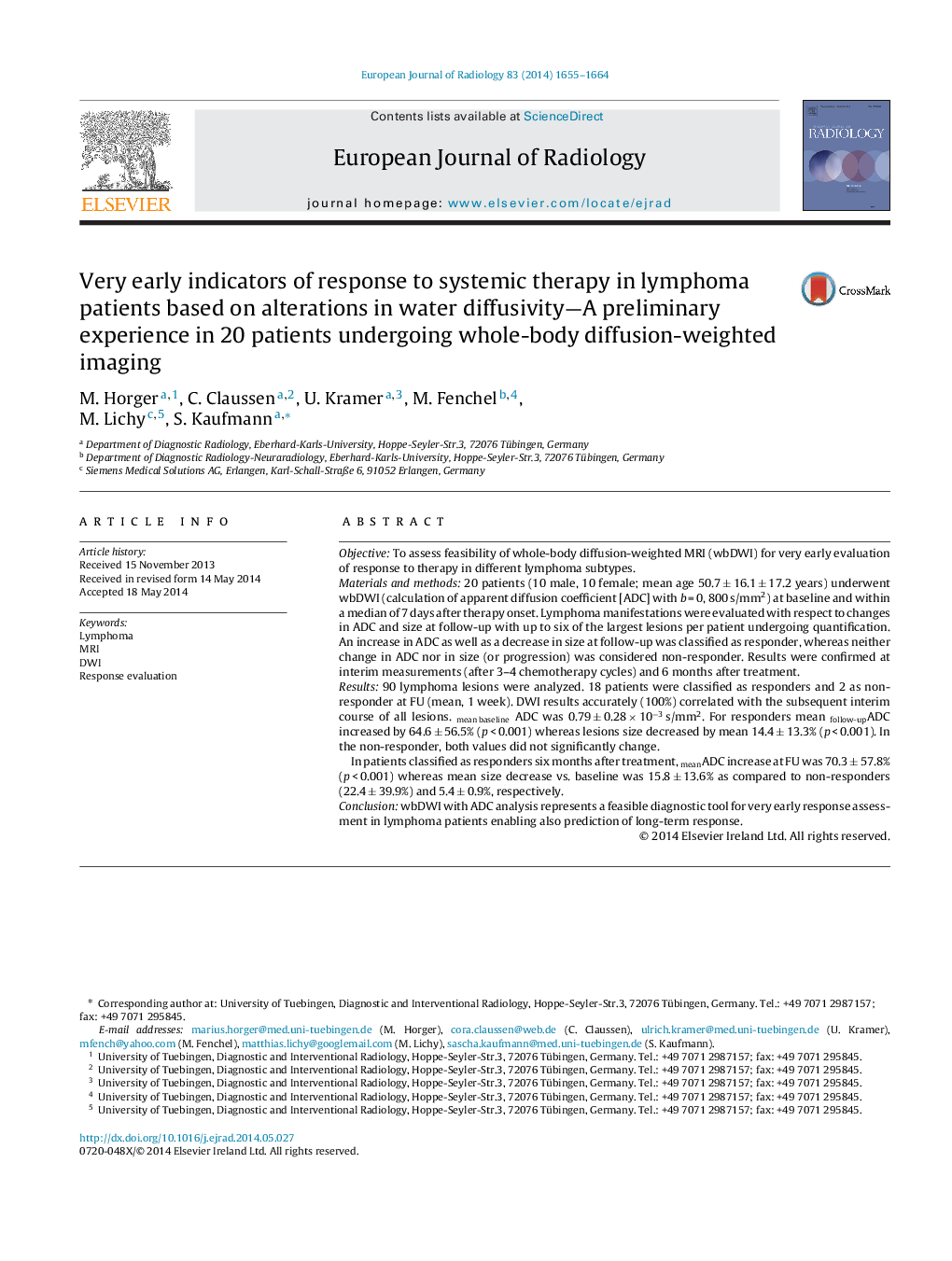| Article ID | Journal | Published Year | Pages | File Type |
|---|---|---|---|---|
| 4225460 | European Journal of Radiology | 2014 | 10 Pages |
ObjectiveTo assess feasibility of whole-body diffusion-weighted MRI (wbDWI) for very early evaluation of response to therapy in different lymphoma subtypes.Materials and methods20 patients (10 male, 10 female; mean age 50.7 ± 16.1 ± 17.2 years) underwent wbDWI (calculation of apparent diffusion coefficient [ADC] with b = 0, 800 s/mm2) at baseline and within a median of 7 days after therapy onset. Lymphoma manifestations were evaluated with respect to changes in ADC and size at follow-up with up to six of the largest lesions per patient undergoing quantification. An increase in ADC as well as a decrease in size at follow-up was classified as responder, whereas neither change in ADC nor in size (or progression) was considered non-responder. Results were confirmed at interim measurements (after 3–4 chemotherapy cycles) and 6 months after treatment.Results90 lymphoma lesions were analyzed. 18 patients were classified as responders and 2 as non-responder at FU (mean, 1 week). DWI results accurately (100%) correlated with the subsequent interim course of all lesions. mean baseline ADC was 0.79 ± 0.28 × 10−3 s/mm2. For responders mean follow-upADC increased by 64.6 ± 56.5% (p < 0.001) whereas lesions size decreased by mean 14.4 ± 13.3% (p < 0.001). In the non-responder, both values did not significantly change.In patients classified as responders six months after treatment, meanADC increase at FU was 70.3 ± 57.8% (p < 0.001) whereas mean size decrease vs. baseline was 15.8 ± 13.6% as compared to non-responders (22.4 ± 39.9%) and 5.4 ± 0.9%, respectively.ConclusionwbDWI with ADC analysis represents a feasible diagnostic tool for very early response assessment in lymphoma patients enabling also prediction of long-term response.
